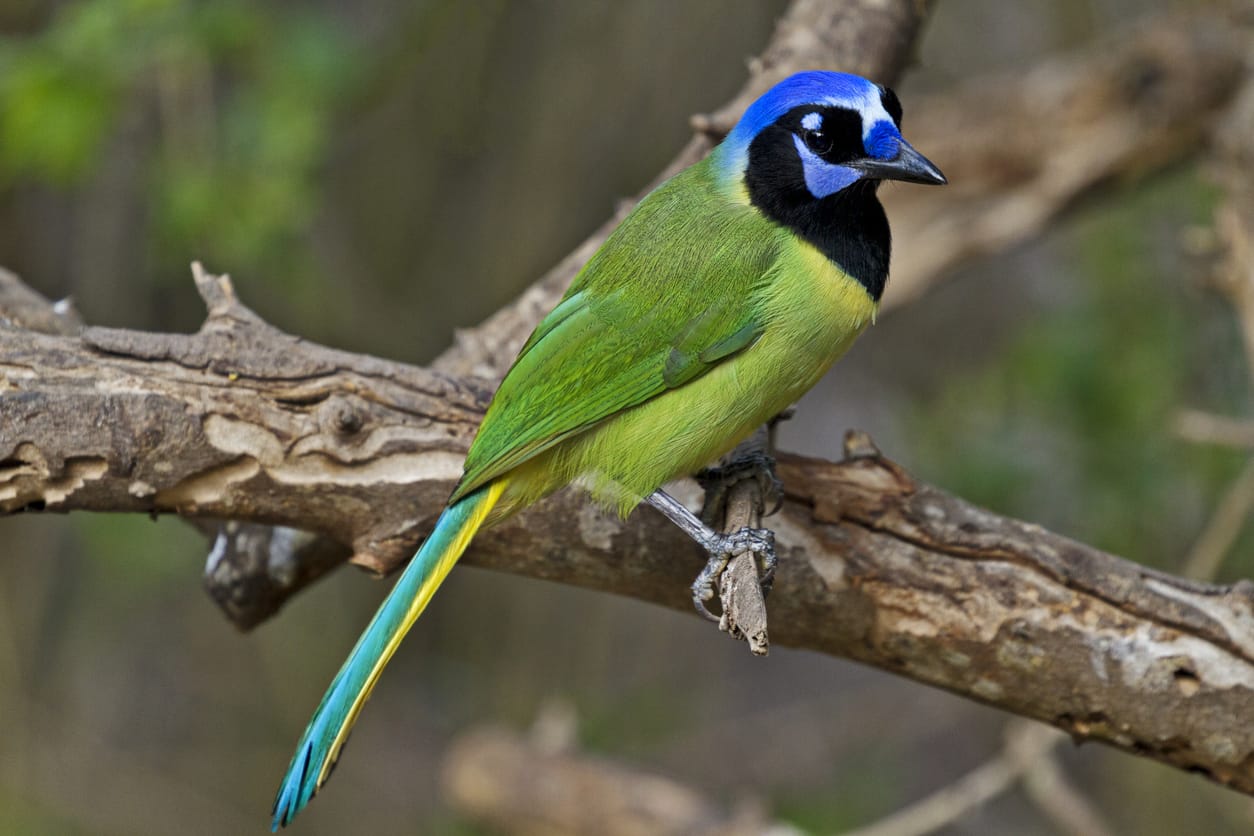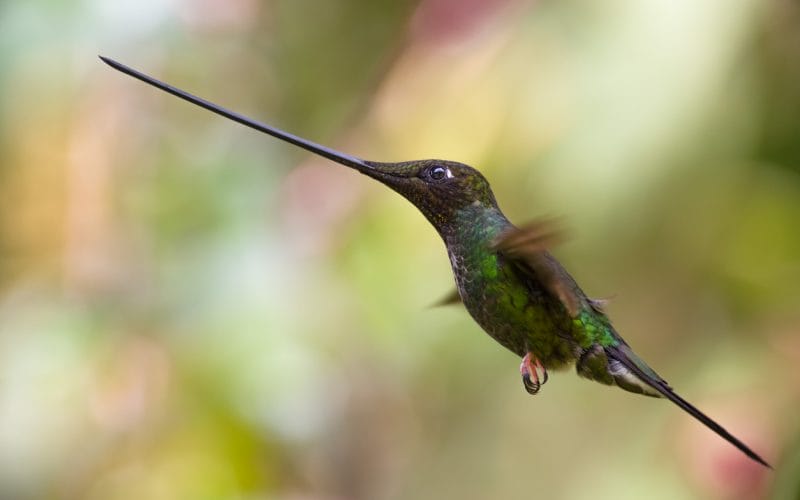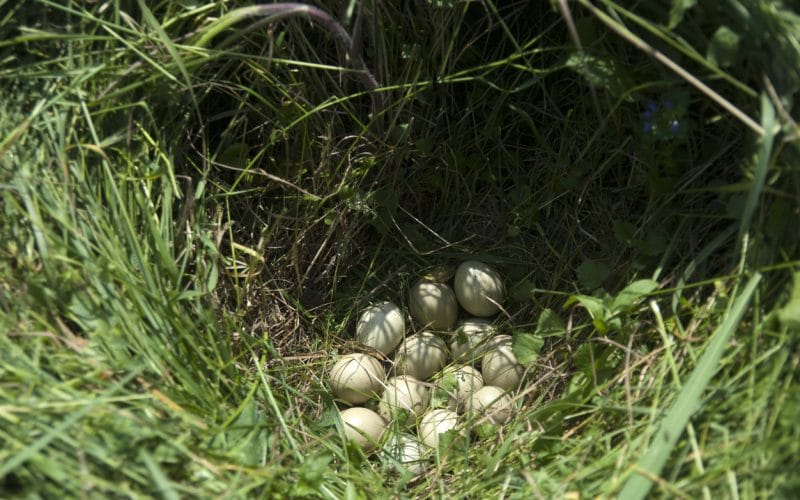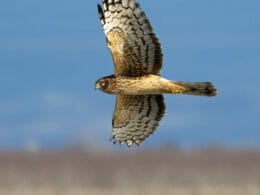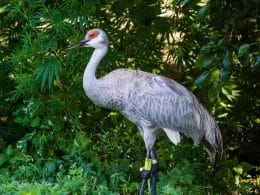Nature brings a plethora of various mesmerizing colors. When most people think of a color for nature, the first one that pops into mind might probably be green.
It’s the color of trees, grass, and some animals. While it might be a common color in reptiles and amphibians, few birds are also green.
Even though you might’ve spotted some green birds, there’s only one truly green bird, the turaco. The other seemingly green birds are merely structurally green. This means that their feathers only appear green due to certain light refractions, rather than pigment.
Having said that, stick around to learn more about birds with green feathers that you won’t want to miss on your next birdwatching trip.
10 Birds with Green Feathers
Despite not all being truly green, these birds are still a wonder to behold. Without further ado, let’s take a look at birds with green feathers.
1. Green Jay
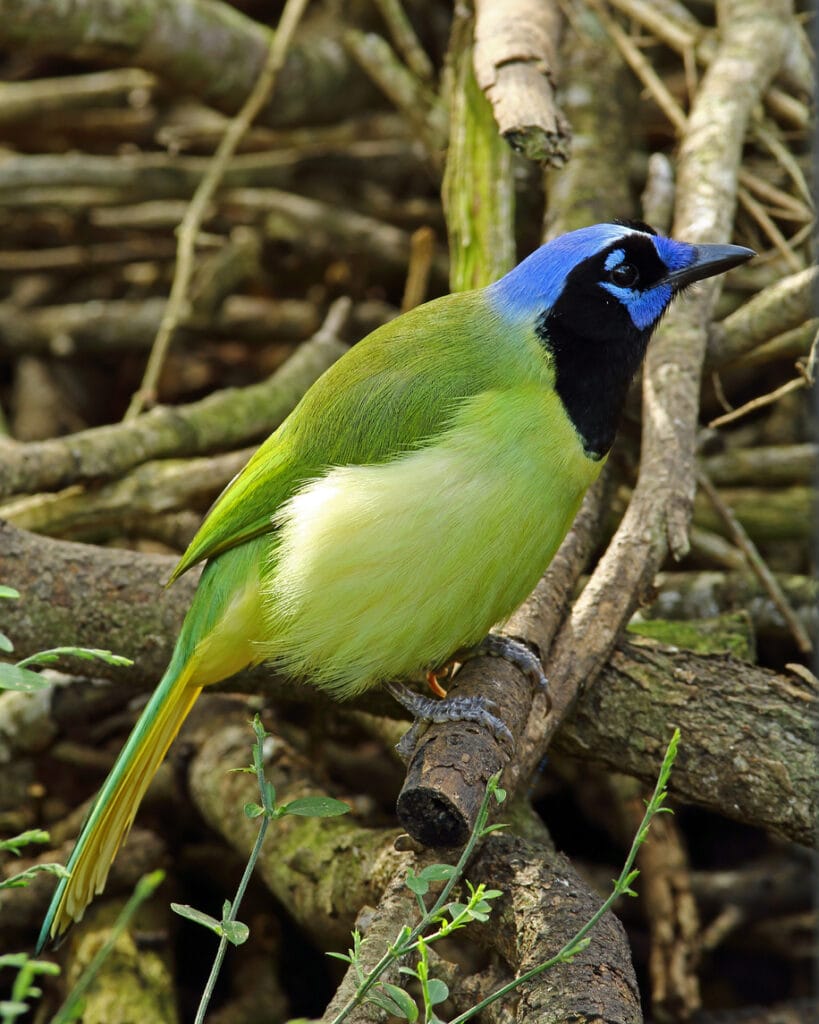
- Scientific Name: Cyanocorax yncas
- Length: 9.8 to 11.4 inches
- Weight: 2.3 to 3.9 oz.
- Wingspan: 15 inches
If you’re out looking for Green Jays, then your best bet is looking through woodlands, parks, and regions with citrus orchards. On a bigger scale, these jays tend to reside in a few regions.
You can find them in Southern Texas’s scrublands or South American rainforests in Bolivia, Venezuela, and Colombia.
They have green wings that seamlessly transition to yellow as you get closer to their chest and tail. Green Jays have a unique pattern on their heads. The top side is a brilliant blue. Meanwhile, the black cuts through their throats and around their miniscule eyes.
Author Note: Green Jays are social birds and enjoy traveling in groups. They’re also notoriously noisy birds and call using all sorts of sounds like rattling, buzzing, and screaming. Let’s just say you’ll have better chances listening to them than spotting them.
The medium-sized birds scavenge all-year round since they’re non-migratory birds. They’re usually on the lookout for fruits, insects, and maybe even lizards and frogs. Green Jays keep their guard up from wandering predators like snakes and owls.
2. Rosy-Faced Lovebird
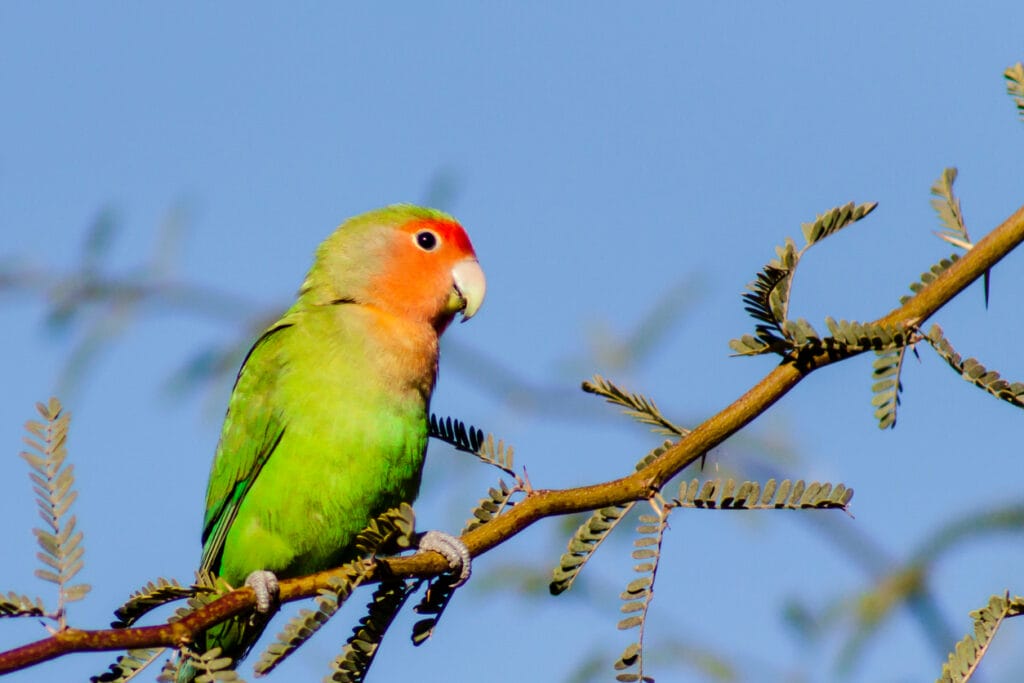
- Scientific Name: Agapornis roseicollis
- Length: 6.7 to 7 inches
- Weight: 1.6 to 2.2 oz.
- Wingspan: 4 inches
Belonging to the parrot family, Rosy-faced Lovebirds are probably the most adorable green-feathered birdies on the list. They’re usually found in households. The small parrots are domesticated because of their small frames and they’re also easy to care for.
Originally, most of the Rosy-faced Lovebird population flourished in the African region, near Angola and Namibia, where they take flight in deserts and tropical savannahs. Afterward, they moved to Arizona and Phoenix.
Apart from their habitat, Rosy-faced Lovebirds are mostly covered in green feathers around their wings and chest. The lovebirds almost look like they’re blushing with their peachy cheeks. As you go downward, their tails are tinged with a bit of royal blue.
Rosy-faced Lovebirds enjoy an assorted diet of dried leaves, nuts, berries, and seeds. Fun fact, the lovebirds don’t mind getting their beaks on some horse poop. It’s filled with nutritious grain fibers and minerals. Why let it go to waste?
3. Asian Green Bee-eater
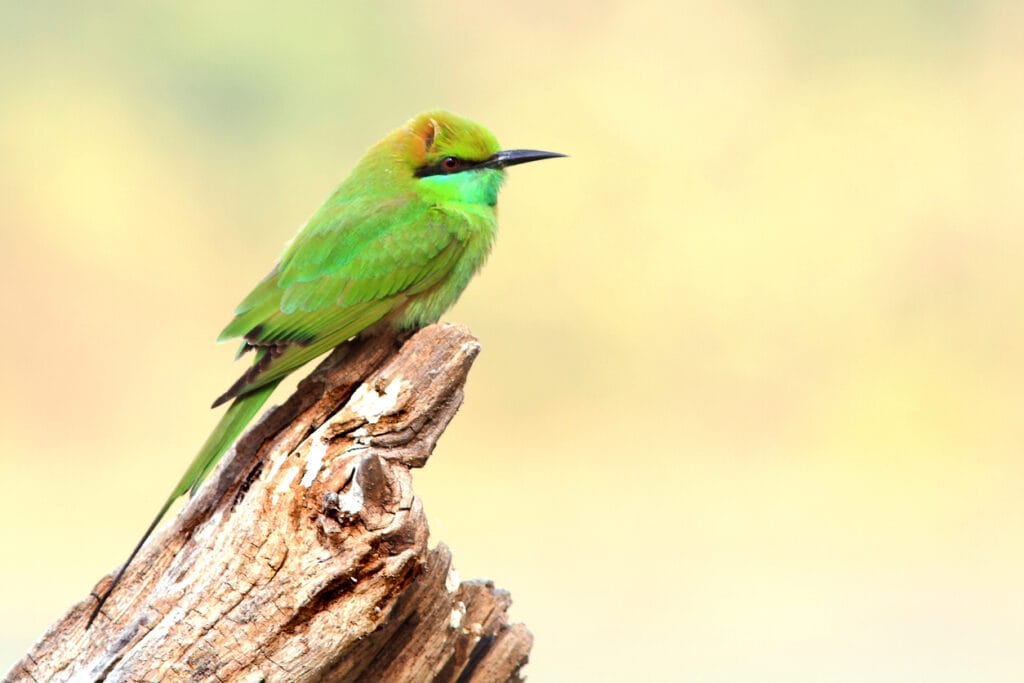
- Scientific Name: Merops orientalis
- Length: 9 inches
- Weight: 0.5 oz.
- Wingspan: 11.4 to 19.3 inches
When we think of Asian Green Bee-eaters, tiny exotic birds come to mind. They’re relatively the size of a sparrow and unmistakably green. Their whole plumage is an exquisite gradient of green shades.
The bee-eaters’ eyes are a contrasting red and masked by a black horizontal stripe. The bird species’ beaks are narrow and black. Some green bee-eaters have blue-hued cheeks as well.
As their name suggests, these types of bee-eaters can be located near Southern Iran, Pakistan, India, Myanmar, Thailand, Vietnam, and Nepal. Asian Bee-eaters find habitat in rainforests, dry forests, shrublands, and near freshwater.
Interestingly, bee-eaters are exceptionally intelligent. They are wary and knowledgeable of human presences, which has made them more cautious of where to place their nests.
Nevertheless, we believe the most impressive skill these birds possess is their bee catching. Asian Green Bee-eaters gorge on a diet rich with all other kinds of insects such as butterflies, fruit flies, and wasps.
Top Tip: If you’re wondering how they don’t get stung by these flying insects, the answer is simple. They squash them, take out their stinger and exoskeleton, and gobble away.
4. Lewis’s Woodpecker

- Scientific Name: Melanerpes lewis
- Length: 10 to 11 inches
- Weight: 4.2 oz.
- Wingspan: 19.3 to 20.5 inches
At first glance, Lewis’s Woodpeckers might seem to sport a black coat. If you look closer, you can make out that they actually have a dark green one. That being said, you don’t need to look too closely to identify these kinds of woodpeckers.
They’re adorned with a unique dark pink plumage mixed with gray near their necks. Their heads are dark iridescent green with a few specks of pink.
Even though they’re called woodpeckers, they don’t always act like them. Traditional woodpeckers may find a tree to drill their beaks into. On the other hand, Lewis’s Woodpeckers are more tamed and simply snatch the crawling insects on the tree.
Since they forage near trees, Lewis’s Woodpeckers prefer flying around woodlands and pine forests. They’re usually spotted in California, Nevada, and Colorado.
If you’re trying to attract these woodpeckers, then you can leave a dead tree in your backyard. It’ll create a suitable habitat for them.
Lewis’s Woodpeckers give off squawks and harsh shrills. During the breeding season, males tend to drum on trees to grab female attention. It starts slow and spaced out, then goes into speedy drum intervals.
5. White-eyed Parakeet
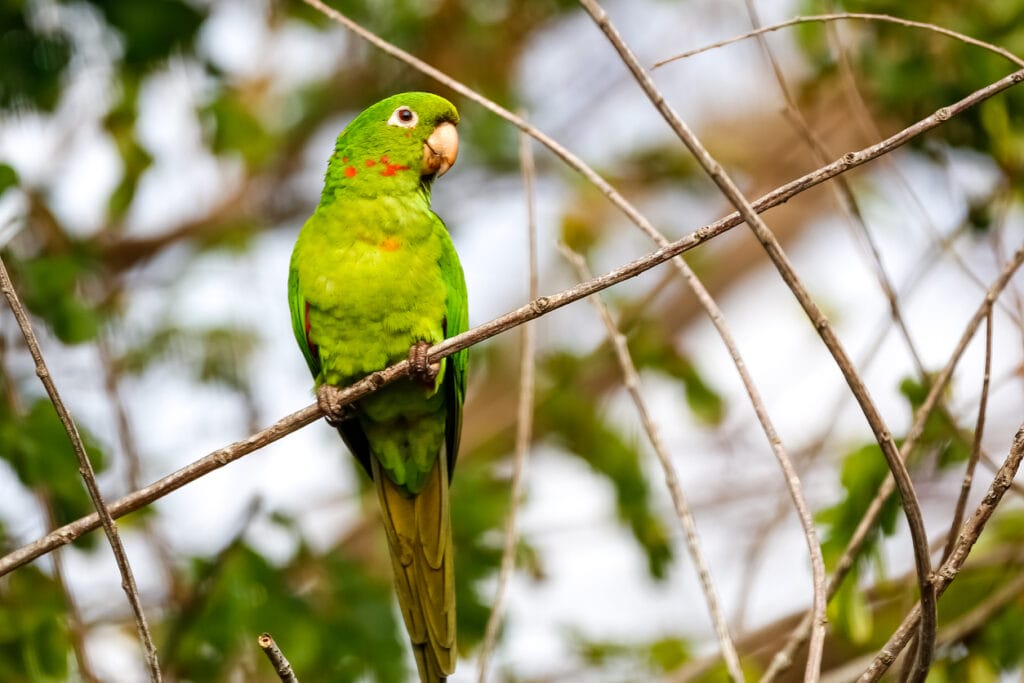
- Scientific Name: Psittacara leucophthalmus
- Length: 12 to 13 inches
- Weight: 3.5 to 7.7 oz.
- Wingspan: 15 to 16 inches
If you’ve always wanted to get your hands on a green-feathered bird, then you might consider getting a White-eyed Parakeet. These sorts of pets aren’t the kind to leave on their own. They’re playful and need lots of attention.
White-eyed Parakeets are incredibly vocal, especially if they’re bored. If kept as pets, then you should reserve at least three hours to play with them. Otherwise, they might get antsy and pluck their own feathers.
When conversing, they give out a shrill and high-pitched sound. We wouldn’t recommend getting White-eyed Parakeets if you live in a small apartment. The noise might get too much for the neighbors.
Author Note: The parakeet species are covered entirely in green, with a few specks of red and yellow around their wings and tail. Once they’re in flight, the wing interior is yellow. They’re not called white-eyed parakeets for nothing. Their eyes are fully lined with white rims.
Wild White-eyed Parakeets consume a diet rich in berries, nuts, fruits, and vegetables. The domesticated ones are usually fed supplemented pellets.
6. Green Kingfisher
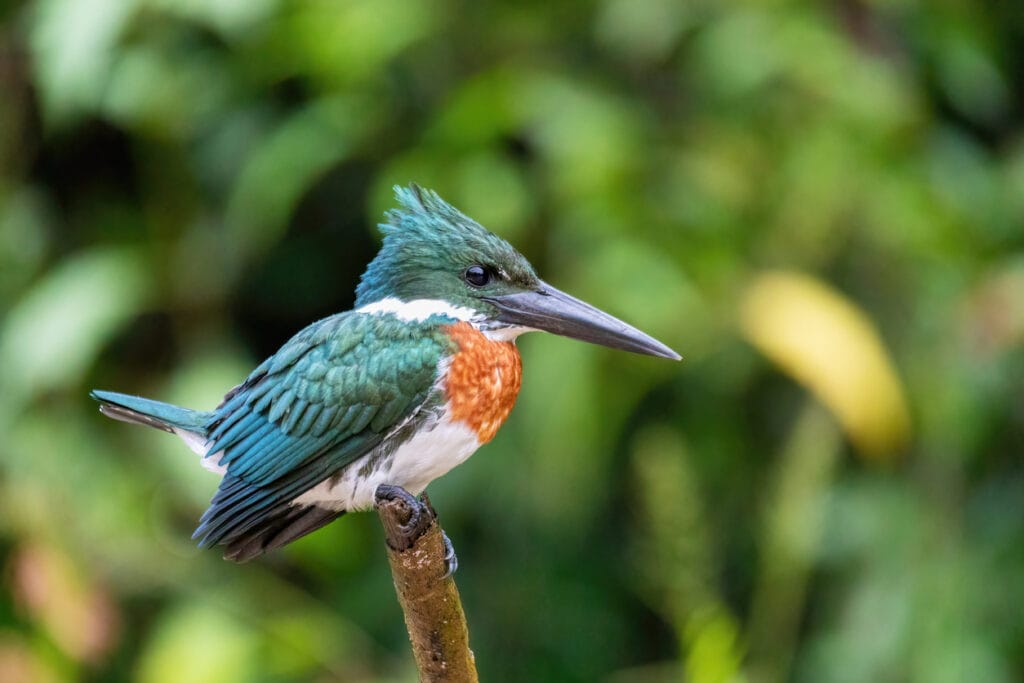
- Scientific Name: Chloroceryle Americana
- Length: 12 inches
- Weight: 1.2 oz.
- Wingspan: 13.8 to 15.7 inches
Green Kingfishers look like something out of an old romance novel. These small-sized birds’ wings are covered in the most exquisite emerald green. Their chests are a distinctive copper-orange shade that blends with their white necks.
Green Kingfishers are also riddled with white spots near their tails. Having said that, the most eye-catching characteristic of Green Kingfishers would have to be their disproportionately large beaks.
They use their beaks to dig up their nests. Unlike other birds, the Green Kingfisher doesn’t build a nest made out of straw. Instead, they form burrows where they place their eggs and foraged food.
Speaking of food, these Kingfisher species feed on small fish, minnows, and aquatic insects. From their diet, you might’ve already guessed they live in a habitat near water. Green Kingfishers are usually seen near lakes, rivers, and freshwater.
If you’re trying to listen in on these birds, you might have to keep your ears especially peeled. They’re not exactly the noisiest bird since they let out quiet “chits,” which might be more difficult to hear along a river.
7. Red-Crowned Amazon
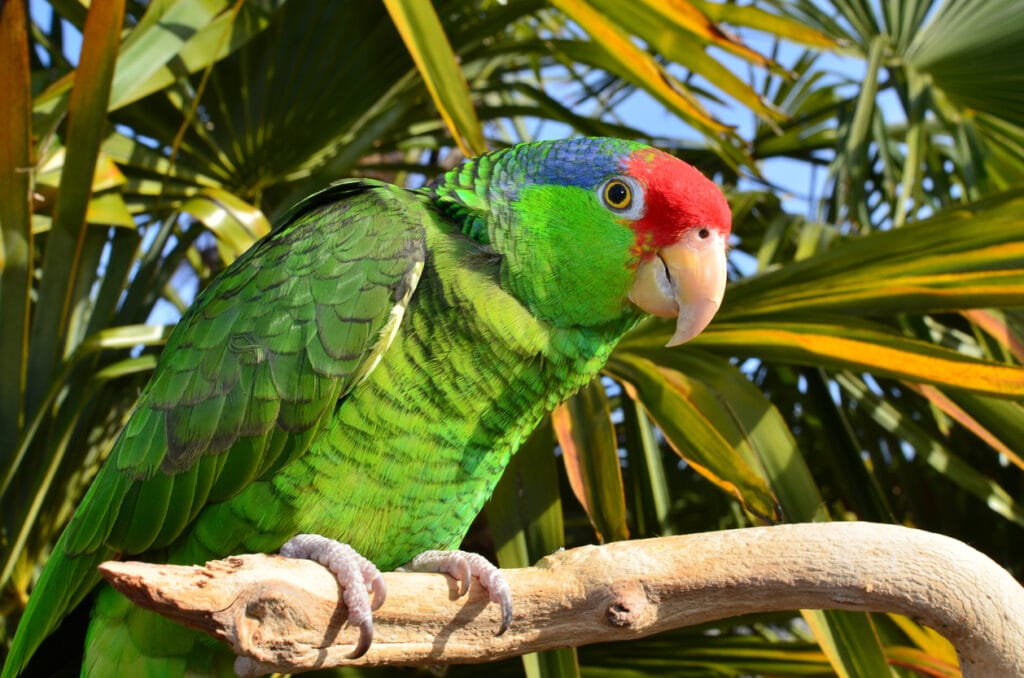
- Scientific Name: Amazona viridigenalis
- Length: 11 to 13 inches
- Weight: 11.3 oz.
- Wingspan: 15 to 16 inches
Native to Mexico, this parrot species is now spread around Southern California, Texas, Florida, and Puerto Rico. Red-crowned Amazons thrive in a range of ecosystems ranging from woodlands to tropical rainforests.
The parrot species are gregarious and enjoy communicating noisily through screeches and shrills. If they’re around humans for a while, they tend to pick up words as well.
Red-crowned Amazons are decorated with several colors. It almost looks like an artist painted their feathers. These parrots got their name from their strikingly red-colored heads. Their eyes are white-rimmed. From the edge of their eyes towards their necks, you’ll notice a contrasting blue as well.
The rest of their bodies are mostly green-colored with a few random lime yellow, red, and blue streaks near their wings’ underside.
Top Tip: Like most other parrots, Red-crowned Amazons snack on berries, nuts, fruits, and seeds. They might also pick at flowers for their nourishing and flavorful nectar.
8. Pacific Parrotlet
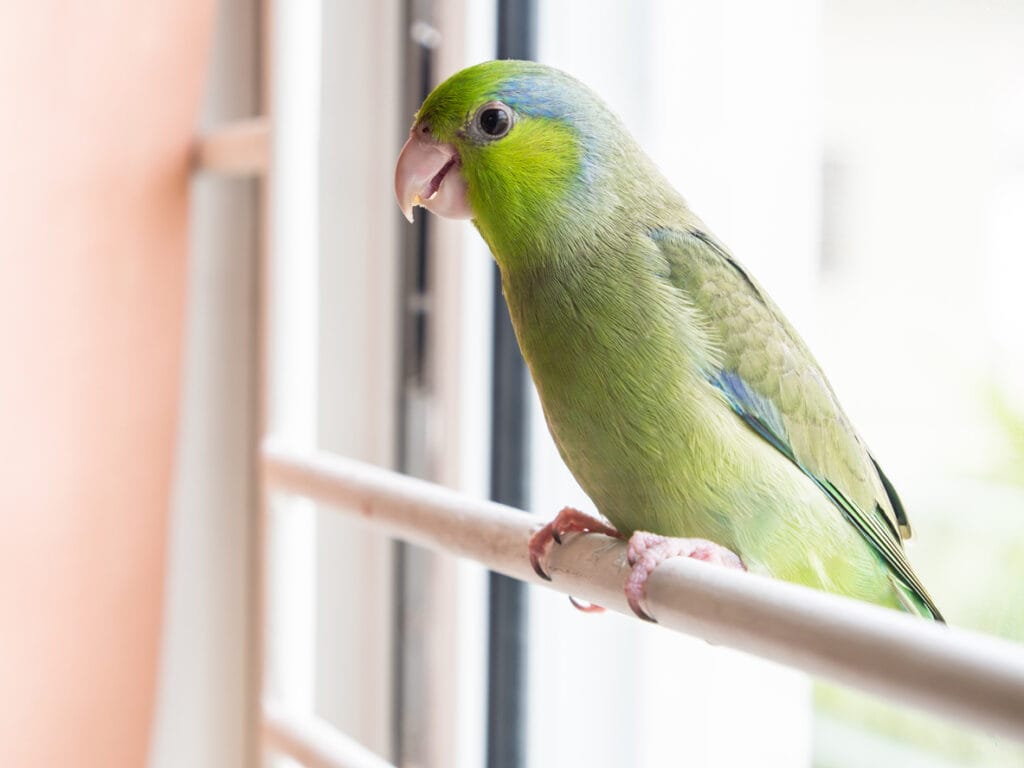
- Scientific Name: Forpus coelestis
- Length: 4.3 to 5.5 inches
- Weight: 1 oz.
- Wingspan: 6 inches
Pacific Parrotlets are pocket-sized green-feathered parrots. Even though they’re incredibly tiny, their personalities are the opposite. If confronted by different species, these parrotlets can often get into squabbles and become territorial.
They’re much friendlier with their fellow species. If you’re thinking of owning one, we recommend getting a couple, because of how social they are.
Apart from that, Pacific Parrotlets are completely green-feathered with only one blue fleck behind their eyes. Other than that, their wings are a darker shade of green compared to their lighter-colored gorget.
Pacific Parrotlets enjoy nibbling on fruits, seeds, and vegetables. Domesticated parrotlets can be fed a regular pellet diet.
9. European Greenfinch

- Scientific Name: Chloris chloris
- Length: 5.5 to 6.3 inches
- Weight: 1 oz.
- Wingspan: 9.6 to 10.8 inches
European Greenfinches are one of the smallest birds on the list. These cute songbirds have lime-green breasts that become bright yellow around the wings and head. Their cheeks are pale olive green and are complete with a short cone-shaped beak.
Greenfinches are a big fan of seeds. When they get their beaks on some fruit, they often seem to disregard the flesh and go for the filling seeds instead.
The petite birds are mainly located in the UK. They fly around in parks, woods, open lands, and hedges. They’re now believed to spread to other continents such as Australia and South America.
European Greenfinches often call out in a “chit-chit-chit” noise that then drags into wheezes. They basically sound like songbirds that you delightfully wake up to in the morning.
10. Guinea Turaco
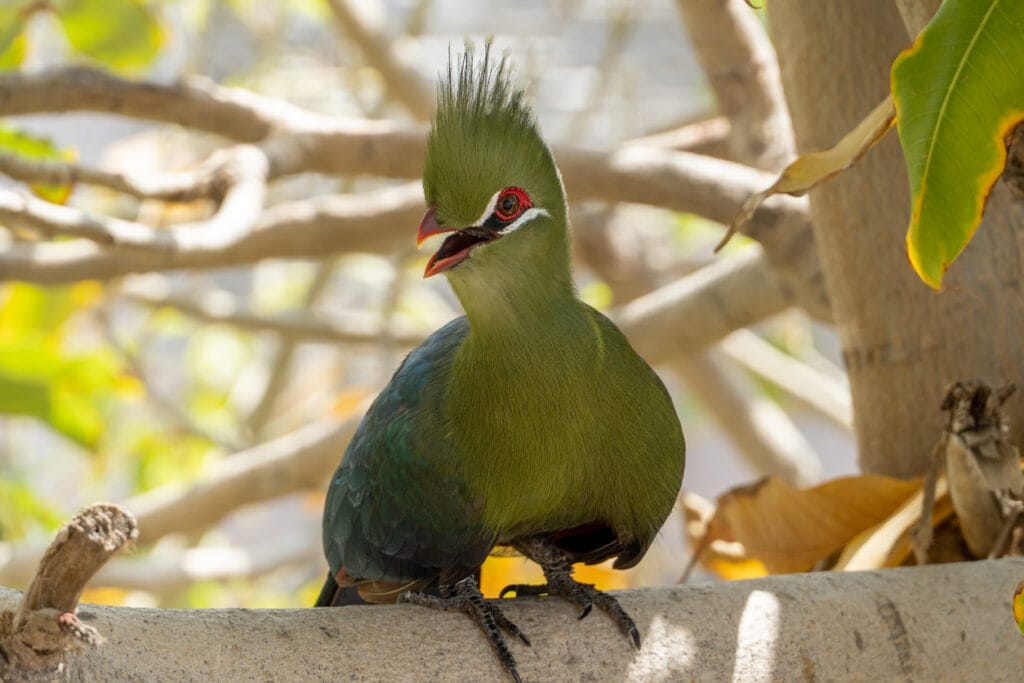
- Scientific Name: Tauraco persa
- Length: 14 to 17 inches
- Weight: 7.9 to 10.2 oz.
- Wingspan: 6.3 to 7 inches
We can’t complete a list of green-feathered birds without mentioning the Guinea Turaco. This bird species is the only one that is genuinely green in every sense. Their feathers contain a pigmented grass-green tone.
Not only are their green feathers true to color, but their red feathers are also similar in pigmentation. So much so that if you mix a red Turaco feather with water, over time, the water will turn a pink shade.
These intriguing birds have a dramatic green mohawk, reminiscent of a cockatoo. Their eyes are red-circled and contain surrounding patches of white and black that line their facial contours.
Top Tip: Their upper bodies are entirely green and as you go down to the tail, it falls into a gradient of a dull black and dark purple color.
Guinea Turacos are frequently found in Africa. They’re so common that they’ve become pests to agricultural spaces. They mainly gorge on fruits and flowers. The good news is that they feed on berries that are poisonous to humans.
To Conclude
Birds come in all colors. Green-feathered ones are particularly widespread around the world. They can be found in Africa, Europe, Asia, and the Americas. Spotting one of them is a real treat.
The good news is that you can own a pet green-feathered bird, most of which are parrots. You’ll be able to admire them every day without having to travel to South American mangroves or African deserts.
We hope you enjoyed our guide on the top birds with green feathers.
FAQ
Yes, there is a species of pigeon called Treron. These are commonly known as Green Pigeons and there are around 30 species found in Africa and Asia.
The wild Budgerigar of Australia is a very small parrot. It is a vivid green with some yellow markings.
Most green birds have a special construction of their feathers that refracts light and to our eyes, that appears to us as green. The Turaco is green because it absorbs green pigment through its diet. This pigment is called turacoverdin.




